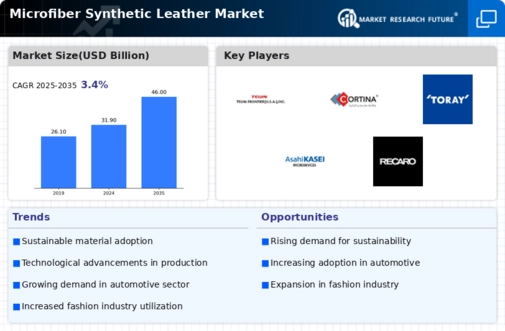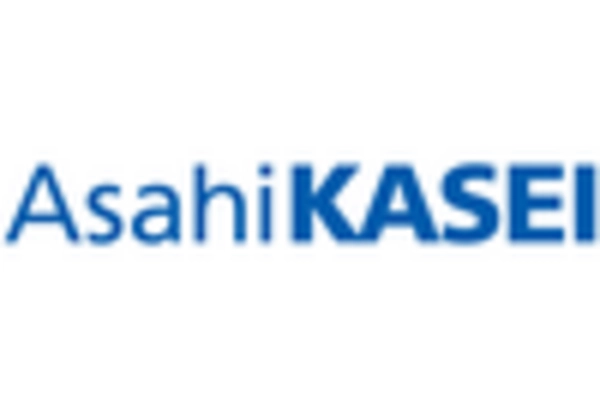The Microfiber Synthetic Leather Market is currently characterized by a dynamic competitive landscape, driven by increasing demand for sustainable and high-performance materials across various industries, including automotive, fashion, and upholstery. Key players such as Toray Industries (Japan), BASF SE (Germany), and DuPont de Nemours, Inc. (US) are strategically positioning themselves through innovation and partnerships. For instance, Toray Industries (Japan) has focused on enhancing its product offerings by investing in R&D to develop eco-friendly alternatives, which aligns with the growing consumer preference for sustainable products. This collective emphasis on sustainability and innovation among major players is reshaping the competitive environment, fostering a market that is increasingly responsive to environmental concerns.
In terms of business tactics, companies are localizing manufacturing and optimizing supply chains to enhance efficiency and reduce costs. The Microfiber Synthetic Leather Market appears to be moderately fragmented, with several key players exerting significant influence. This fragmentation allows for a diverse range of products and innovations, yet the presence of dominant firms like BASF SE (Germany) and DuPont de Nemours, Inc. (US) suggests a competitive structure where these companies can leverage their resources to maintain market leadership.
In August 2025, BASF SE (Germany) announced a strategic partnership with a leading automotive manufacturer to develop a new line of biodegradable synthetic leather. This collaboration is significant as it not only enhances BASF's product portfolio but also positions the company at the forefront of sustainable material innovation in the automotive sector. Such partnerships are likely to drive further advancements in the market, as they combine expertise from different industries to create innovative solutions.
In September 2025, DuPont de Nemours, Inc. (US) launched a new range of microfiber synthetic leather products designed specifically for high-performance applications in sports and outdoor gear. This move underscores DuPont's commitment to innovation and its ability to cater to niche markets, potentially increasing its market share. The introduction of specialized products may also encourage competitors to enhance their offerings, thereby intensifying competition.
Moreover, in July 2025, Toray Industries (Japan) expanded its production capacity in Southeast Asia to meet the rising demand for synthetic leather in the region. This expansion is indicative of Toray's strategy to localize production and respond swiftly to market needs, which could enhance its competitive edge. By increasing its manufacturing capabilities, Toray is likely to improve supply chain reliability and reduce lead times, further solidifying its position in the market.
As of October 2025, the competitive trends in the Microfiber Synthetic Leather Market are increasingly defined by digitalization, sustainability, and the integration of advanced technologies such as AI. Strategic alliances are becoming more prevalent, as companies recognize the value of collaboration in driving innovation and addressing sustainability challenges. Looking ahead, it appears that competitive differentiation will evolve from traditional price-based competition to a focus on innovation, technological advancements, and supply chain reliability, suggesting a transformative shift in how companies compete in this market.


















Leave a Comment